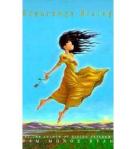 Which Side Are You On? The Story of a Song. Written by George Ella Lyon. Illustrated by Christopher Cardinale. Cinco Puntos Press, 2011. 40 pages. Recommended for ages 9-11. ISBN: 9781933693965.
Which Side Are You On? The Story of a Song. Written by George Ella Lyon. Illustrated by Christopher Cardinale. Cinco Puntos Press, 2011. 40 pages. Recommended for ages 9-11. ISBN: 9781933693965.
Omie, the oldest child, tells this story. It’s the story of how her mother wrote the song “Which Side Are You On” while the family home was blasted by bullets and all seven children were huddled under the bed. This is 1931 in Harlan County, Kentucky, and there’s a union strike at a coal mine. The children’s father, Sam Reece, is a union organizer. The bullets are meant for him, but the children’s mother, Florence Reece, has warned him to stay away from home, so he’s headed towards the mountains to hide. In the middle of this barrage of bullets, Florence decides the union movement needs a song. She grabs the month of May off the calendar and writes the song. When Sam comes home, he says the song will help bring the union members together.
The miners are striking because working conditions at the mine are bad and living conditions are bad as well. The mine owners own the houses the miners live in, they own the land under the house, and they pay the miners with scrip that’s only good at the mine company store.
The words to the song are on ribbons incorporated into the illustrations. The song brings the miners together. It’s brought together many other groups of people fighting for their rights.
The illustrations, which look almost like woodcuts, add a great deal to the story. In fact, the story couldn’t stand on its own. It needs the illustrations.
At the end of the book there’s an author’s note. The author addresses the history of labor relations among mine workers in the early part of the 20th century. She also addresses folk music. She talks about how songs change to fit specific situations or specific needs.
I ordered this book from Amazon. It arrived without a jacket. I assumed the book didn’t have a jacket. When I began looking at blog reviews, I found that multiple reviewers mentioned key information that was printed on the front flap of the jacket. I went looking for the text of the front flap. I found it on Amazon. It’s easy for books to get separated from their jackets. I wish the publisher had included the key information in the book itself.
I’ve heard Pete Seeger sing the song for most of my life. As I read the book, I can hear his banjo and his voice.
Pete Seeger sings the song:
Florence Reece sings the song:
Blog Reviews:
Book Dragon
Books We Love: From the Park Ridge Public Library Children’s Staff
Paper Tigers
Shelf Awareness
Sing Books with Emily, the Blog
Teaching a People’s History: Zinn Education Project


